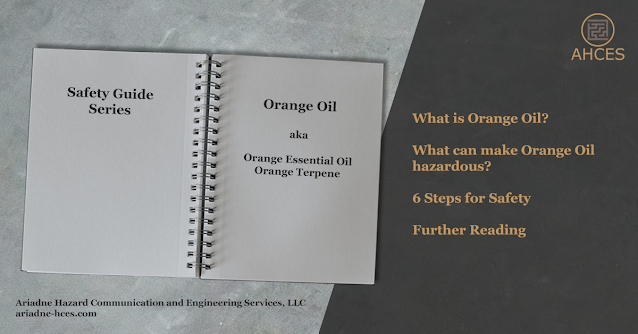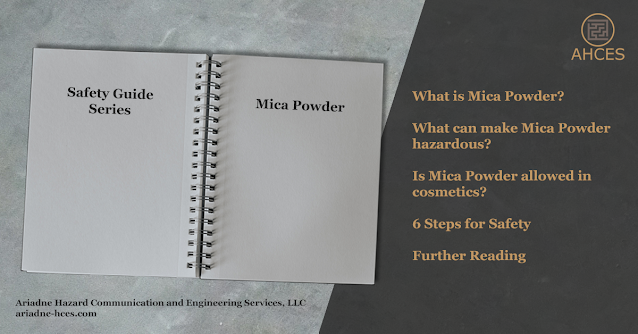Using the Five Senses for Detecting Hazardous Chemicals
Being informed is an important aspect of maintaining
workplace safety. Most information on hazardous chemicals will come from the
labels and safety data sheets (SDS). These documents will describe the
hazardous properties of the chemicals, as well as their appearance, state of
matter, and other identifying chemical and physical properties. Being able to
recognize and use this information is important for detecting hazardous
chemicals in the event of an accident.
How to Safely Use the Five Senses for Detecting Hazardous Chemicals
Human senses can be used to directly identify the
presence of hazardous chemicals, from seeing a spill to smelling an odor.
There are some hazardous chemicals that become hazardous
to human health before they can be sensed or cannot be sensed at all due to
lacking identifying properties such as color or scent. For these types of
hazardous chemicals, detection and alarm systems are a vital part of creating a
safe work environment. These alarm systems provide humans with an indicator
there is a hazard present, often having a combination of flashing lights and
loud sounds which can be detected using the senses.
Either through direct observation or through alarm
systems, the senses enable situational awareness for workplace safety.
Sight
Sight can be used to detect hazardous chemical leaks and
spills.
When working with hazardous chemicals, pay attention to
anything that looks out of place or has unexpectedly changed. This can include
uncontained material, such as a puddle of liquid or a pile of powder. Look for
damaged packaging, such as broken or cracked bottles.
Sight can also be used to notice alarms that have a
flashing light or display as part of their warning system.
Hearing
Hearing can be used to detect active leaks.
Listen for sounds that indicate a loss of containment.
This can include whistling and hissing noises which indicate gas escaping a
cylinder. The sound of breaking glass can indicate a container has broken.
Hearing can also be used to notice alarms that have a
loud noise or siren as part of their warning system.
Smell
Some hazardous chemical leaks or spills can be detected
by smell.
Hazardous chemicals may have a natural smell such as the
pungent, rotten-egg-like odor of hydrogen sulfide. Some hazardous chemicals may
have no natural odor but have an odorant added to them to allow for detection
by scent, such as odorized natural gas.
Smell should never be used as the primary means of
identifying a chemical that is classified as hazardous due to being a
respiratory hazard or one having an airborne contaminant limit.
Touch
Touching a hazardous chemical is, generally, a negative
occurrence. Hazardous chemicals can be hazardous due to being irritating,
corrosive, or otherwise damaging to the skin. Touching hazardous chemicals can
also spread them to other areas that would have otherwise remained
uncontaminated.
Touch should never be used as the primary means of
identifying a hazardous chemical. If a hazardous chemical is touched with bare
skin, the response instructions provided in the first aid section of the SDS
should be followed.
Taste
Tasting a hazardous chemical is, generally, a very
negative occurrence. Hazardous chemicals can be hazardous due to oral toxicity.
Even chemicals that are not lethal can still make an individual ill by
ingesting a small amount.
Taste should never be used as the primary means of
identifying a hazardous chemical. If a hazardous chemical is ingested, the
response instructions provided in the first aid section of the SDS should be
followed.





Comments
Post a Comment